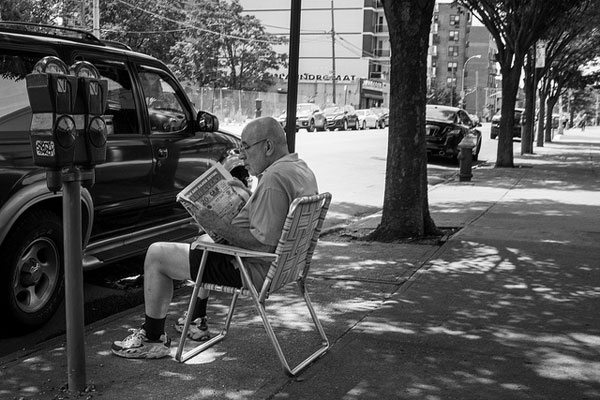
March 3, 2018; New York Post
New York City’s Metropolitan Museum of Art —better known as “the Met”—last week initiated a long-planned mandatory fee of $25 for out-of-state visitors. Residents of New York and students from neighboring states of New Jersey and Connecticut are exempted from the mandatory admission fee. Since 1970, the Met has had a suggested admission fee. But the proportion of visitors who paid the full suggested price has fallen over the past 13 years from 63 percent to 17 percent. Admissions have risen during that same period from 4.3 million to 7 million, so the “pay as you go” policy may have boosted access, but revenues have not kept pace.
Add to this the fact that the Met has run losses in recent years. Last year, the museum lost a little over $10 million on a revenue base of $385 million. With net assets of $3.4 billion, the museum remains in a solid position financially, although operating losses are never welcome. Making fees mandatory is expected to raise $6 million.
The Met, to be sure, is hardly the only museum to charge fees. NPQ’s Eileen Cunniffe, for instance, noted that museums in both Chicago and Los Angeles raised prices at the beginning of this year. Some have even argued that fees can sometimes increase admissions, although this seems unlikely at the Met given past admissions growth. Regardless, the policy shift at what is arguably the nation’s leading art museum provides one more place where commerce has come to overwhelm other values. This can be seen both on the expense and revenue side of the ledger.
Melissa Klein in the New York Post focuses on the expense side, and especially the high salaries earned by Met executives. This is often something of a red herring but often used by journalists to create a sense of outrage. Klein notes that current CEO “Daniel Weiss was paid $670,066 in 2016 as the Metropolitan Museum of Art’s president and received a housing allowance that brought his total compensation package to $901,671, according to the Met’s 2016 tax filing, the latest available.” Klein adds,
Suzanne Brenner, the Met’s senior VP and chief investment officer, got a $470,313 bonus, bringing her total compensation to $1.3 million, according to the records obtained by The Post.
Chief investment officer Lauren Meserve received a $424,589 bonus and $1.2 million in total compensation.
Sign up for our free newsletters
Subscribe to NPQ's newsletters to have our top stories delivered directly to your inbox.
By signing up, you agree to our privacy policy and terms of use, and to receive messages from NPQ and our partners.
And there is more. A year ago, in February 2017, CEO Thomas Campbell announced his resignation in, as NPQ’s Ruth McCambridge put it, “one of those euphemistic ‘mutual agreement’ moments.” The resignation was seen as driven by operating losses, yet Campbell was, as Klein notes, permitted to retain his museum-provided flat “for six months past his June 30, 2017 departure.” Five other Met executives received six-figure severance payments in 2016—that year, there were 50 employee buyouts and 34 layoffs, all told.
One can argue, as the Met has, that these high executive salaries have been vetted by third-party compensation experts and are in line with salaries of similarly scaled institutions. Indeed, for an organization with a nearly $400 million budget, such salaries are not entirely absurd – nor do they necessarily reflect a valuing of money over artistic values.
But questions around the budget choices of the Met persist—as they likely should, considering its prominence and importance. Speaking to Laura Van Stratten of the New York Times, Chicago-based artist and architect Amanda Williams asks, “What are we valuing in this difficult political and economic moment? And for young people, especially little black and brown bodies, they are receiving more and more messages that they don’t belong.”
Another artist interviewed by Van Stratten, Ross Bleckner, had mixed feelings, noting that relying on politically suspect donations has its own costs: “A museum can only squeeze so much out of the Kochs and the Sacklers.” Bleckner adds, however, that the Met’s action to charge fees is “a symptom of a systemic problem: monetizing things that should be a right, like health care, education and, now, culture.”
Then, there are the employees. In the New York Times, Robin Pogrebin notes there has “been some internal grumbling inside the Met about the new admissions policy. Several curators oppose the change on philosophical grounds, and some guards are chafing at their additional responsibilities, according to two employees who spoke on condition of anonymity, having not been authorized to comment publicly.”
To be sure, the Met faces a difficult balancing act. But, as artist Will Cotton notes, “In Article 6 of the Met’s mission statement, the museum expresses its intent to ‘reach out to the widest possible audience in a spirit of inclusiveness.’”
There are few nonprofits so regularly scrutinized for their budget choices as New York City’s Metropolitan Museum of Art, and there is nothing wrong with that. Sometimes reporters get hold of the wrong end of the stick, but in the end, the level of public dialogue around the institution may be an asset, driving its increased attendance and creating an enviable—if tense—operating environment.—Steve Dubb













